Ancient Egypt Mythology,
Artistic Wonders
Ancient Egypt Art, Iconic Masterpieces
Most Extraordinary Egyptian Artworks & Sculptures
Wonderful Amazing Tour to Ancient Egypt Artistic Wonders, Ancient Egypt Art, Iconic Masterpieces, Most Extraordinary Egyptian Artworks, Sculptures, Coffins, Reliefs, Gold Jewelry, Mummies, Tomb and Temples Real Scenes, Temples Pylons, Golden Masks, Busts, Sarcophaguses.
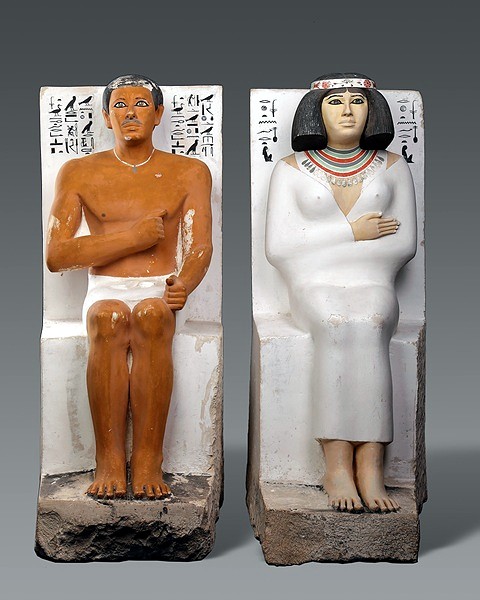
Rahotep and Nofret,
Gallery number: 32 – Ground Floor, Egypt Museum,
Period: Old Kingdom, Dynasty: Dynasty 4, Reign of Snofru (ca. 2613-2589 BC), Size: Height of Rahotep 121 cm;
Height of Nofret 122 cm, Place of discovery: Mastaba of Rahotep,
These two statues represent prince Rahotep–son of Snofru and brother of Khufu–and his wife Nofret. They were created during the transitional period between the Third and Fourth Dynasties and are very good illustrations of the strict canons that governed the art of this period in Egyptian history. The two statues are very frontal and idealized, since they represented how the deceased figures wished to appear in the afterlife. Rahotep is painted reddish-brown, the colour men were customarily represented with, since they spent a great deal of time in the sun. Nofret is depicted in a pale yellowish colour, as most women were represented in ancient Egypt. Their pose is very typical of this time in ancient Egyptian history. The colours on these statues are extremely well preserved. This and their very realistic eyes, inlaid with rock-crystal, calcite, and outlined with copper make these statues among the most impressive pieces in the Egyptian Museum.
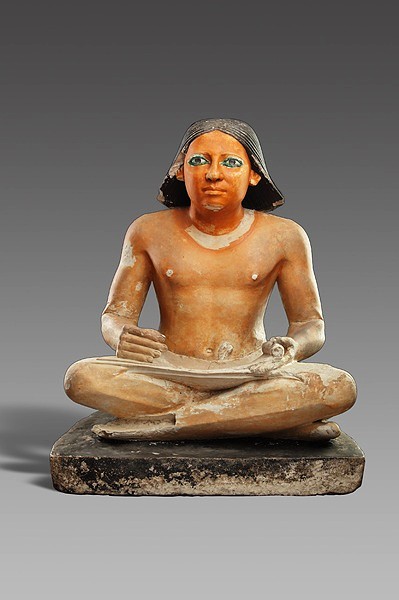
Scribe Statue
Gallery number: 42 – Ground Floor Egyptian Museum, Period: Old Kingdom, Dynasty: Dynasty 5 (ca. 2465-2323 BC), Size: Height 51 cm, Place of discovery: Saqqara, Material: Painted Limestone; Eyes: Rock Crystal, Calcite, Copper.
During the Old Kingdom officials often commissioned statues for their tombs depicting themselves as scribes. Only a small percentage of the population was literate and therefore the ability to read and write opened up possibilities for economic and social advancement. Individuals desired to retain their status in the afterlife and so they were careful to include images in their tombs that reflected their status and their abilities. The standard scribal pose includes the legs crossed beneath a partially spread roll of papyrus. The right hand is positioned to hold a reed pen. Those who were literate possessed the power to make something exist by putting it into writing or by repeating written words. Repetition of the offering lists in a tomb would magically supply the deceased with all that they desired.
This exceptionally beautiful scribe statue is uninscribed; the name of the subject, therefore, remains unknown. This piece is skillfully sculpted. The facial features are well modeled and, unlike most stone statues, the arms are freed from the torso. The right hand would have been holding a reed pen, while the left holds the papyrus roll.
This iconic statue is currently the logo of the Faculty of Arts, Cairo University and has also inspired the logo of the Cairo International Book Fair.
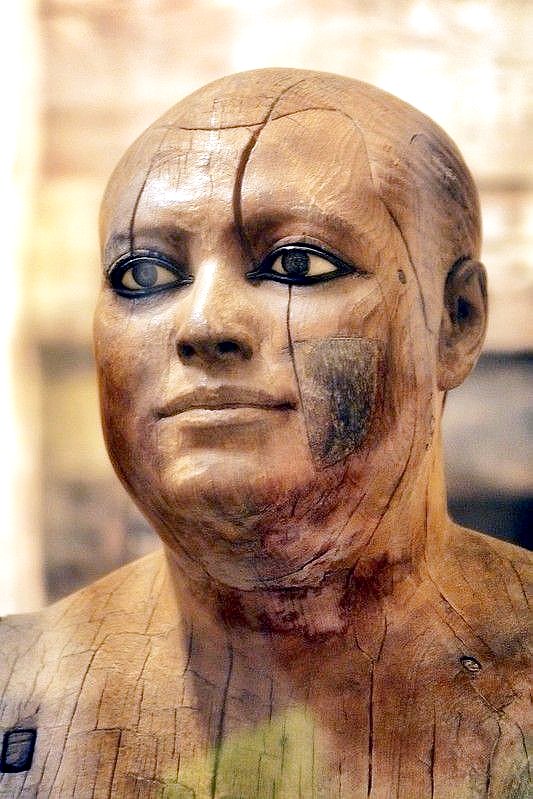
Statue of the Lector Priest Kaaper, known as Sheikh el-Beled. From his Mastaba (tomb) in North Saqqara. Old Kingdom, 5th Dynasty, ca. 2494-2345 BC. Now in the Egyptian Museum, Cairo. This statue is made from sycamore wood, eyes made from rock crystal rimmed with copper.
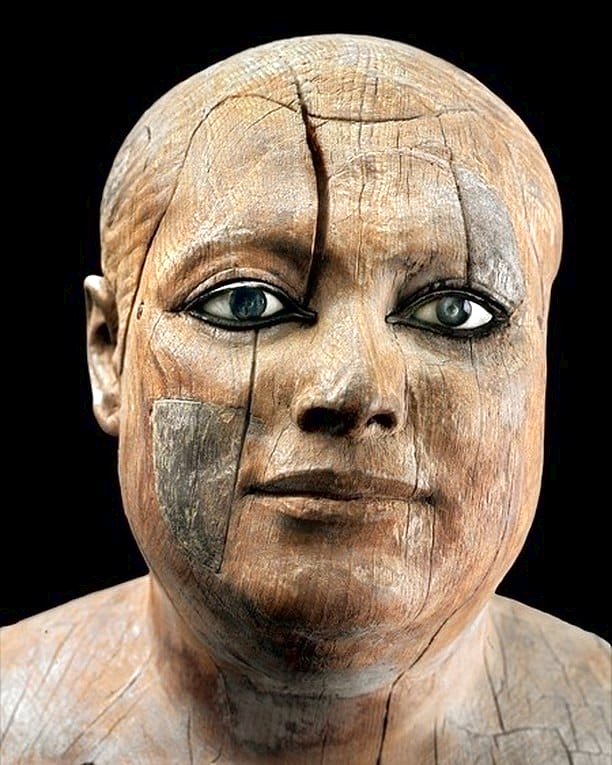
Statue of the Lector Priest Kaaper, known as Sheikh el-Beled. From his Mastaba (tomb) in North Saqqara. Old Kingdom, 5th Dynasty, ca. 2494-2345 BC. Now in the Egyptian Museum, Cairo. This statue is made from sycamore wood, eyes made from rock crystal rimmed with copper.
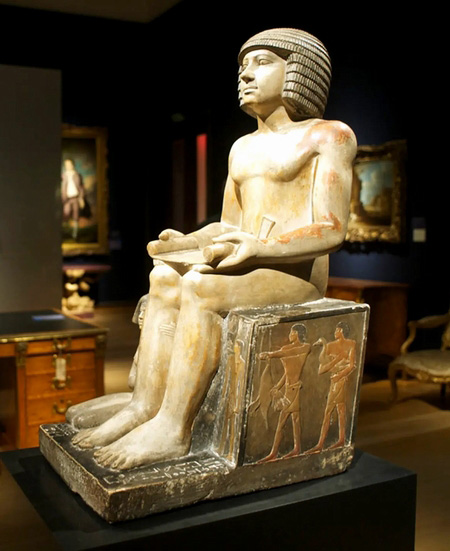
Sekhemka Statue
Height 75 cm, Width 43 cm,
Created c. 2420 BC, Discovered c. 1850
The statue depicts Sekhemka sitting in a traditional scribal pose and holding on his knees a partly unrolled papyrus which lists various offerings. He is named in an inscription on the plinth of his statue as "Inspector of Scribes in the House of Largesse, one revered before the Great God". His wife Sit-Merit is shown sitting at his feet. The limestone statue is 75 centimetres (30 in) tall with the base from front to rear being 43 centimetres (17 in).
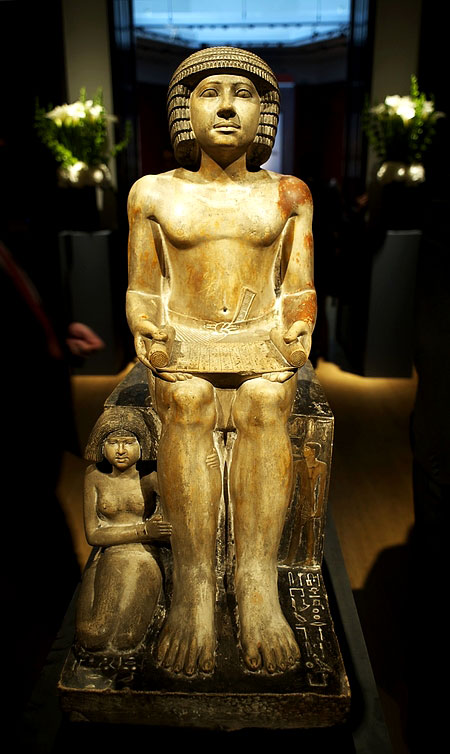
Sekhemka Statue
Height 75 cm, Width 43 cm,
Created c. 2420 BC, Discovered c. 1850
The statue depicts Sekhemka sitting in a traditional scribal pose and holding on his knees a partly unrolled papyrus which lists various offerings. He is named in an inscription on the plinth of his statue as "Inspector of Scribes in the House of Largesse, one revered before the Great God". His wife Sit-Merit is shown sitting at his feet. The limestone statue is 75 centimetres (30 in) tall with the base from front to rear being 43 centimetres (17 in).
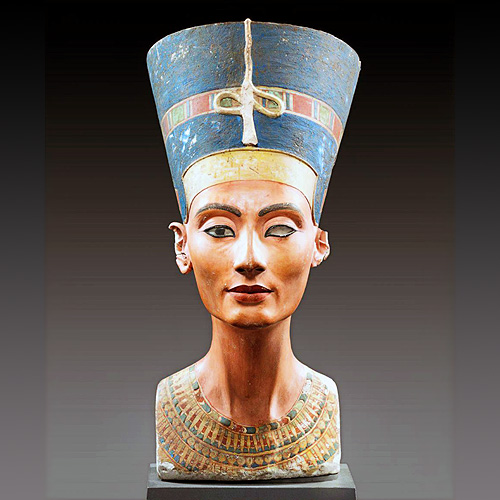
Queen Nefertiti Bust, Egypt, Tell el-Amarna, New Kingdom, 18th Dynasty, ca. 1351–1334 BC, height: 49 cm; width: 24.5 cm depth: 35 cm; material: limestone, painted stucco, quartz, wax.
© Staatliche Museen zu Berlin, Ägyptisches Museum und Papyrussammlung / Sandra Steiß
-----------------------------------------
Nefertiti was the Great Royal Wife of Pharaoh Akhenaten during Egypt’s 18th Dynasty, around 1353–1336 BCE.
She played a central role in the religious revolution that introduced Atenism, the earliest known form of monotheism, worshipping the sun disc Aten.
Her famous bust, discovered in the early 20th century and housed in Berlin’s Neues Museum, is one of the most celebrated artifacts of ancient art.
Nefertiti and Akhenaten ruled from the city of Amarna, which they built as a new capital dedicated to Aten.
She had six daughters, including Ankhesenamun, who later married Tutankhamun.
Her name means “The Beautiful One Has Come” reflecting her legendary beauty and grace.
Theories about her origins vary—some suggest she was the daughter of the courtier Ay, while others believe she was of elite but non-royal birth.
Some scholars believe she may have ruled briefly as Pharaoh under the name Neferneferuaten after Akhenaten’s death.
Despite her prominence, her tomb and remains have never been definitively found, adding mystery to her legacy.
Egypt continues to demand the return of her iconic bust from Germany, viewing it as a vital piece of national heritage.
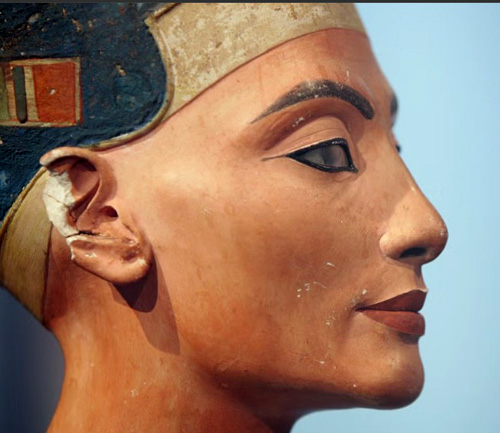
Queen Nefertiti Bust, Egypt, Tell el-Amarna, New Kingdom, 18th Dynasty, ca. 1351–1334 BC, height: 49 cm; width: 24.5 cm depth: 35 cm; material: limestone, painted stucco, quartz, wax.
© Staatliche Museen zu Berlin, Ägyptisches Museum und Papyrussammlung / Sandra Steiß
-----------------------------------------
Nefertiti was the Great Royal Wife of Pharaoh Akhenaten during Egypt’s 18th Dynasty, around 1353–1336 BCE.
She played a central role in the religious revolution that introduced Atenism, the earliest known form of monotheism, worshipping the sun disc Aten.
Her famous bust, discovered in the early 20th century and housed in Berlin’s Neues Museum, is one of the most celebrated artifacts of ancient art.
Nefertiti and Akhenaten ruled from the city of Amarna, which they built as a new capital dedicated to Aten.
She had six daughters, including Ankhesenamun, who later married Tutankhamun.
Her name means “The Beautiful One Has Come” reflecting her legendary beauty and grace.
Theories about her origins vary—some suggest she was the daughter of the courtier Ay, while others believe she was of elite but non-royal birth.
Some scholars believe she may have ruled briefly as Pharaoh under the name Neferneferuaten after Akhenaten’s death.
Despite her prominence, her tomb and remains have never been definitively found, adding mystery to her legacy.
Egypt continues to demand the return of her iconic bust from Germany, viewing it as a vital piece of national heritage.
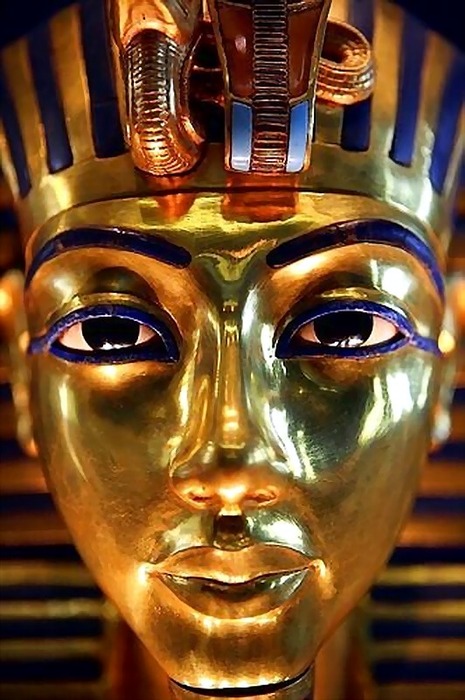
King Tutankhamun Golden Mask is one of the most iconic treasures of ancient Egypt,
Crafted from over 10 kilograms of solid gold, it radiates divine brilliance and royal power,
Intricate inlay work features lapis lazuli, obsidian, quartz, and colored glass, symbolizing eternity,
The nemes headdress is adorned with a cobra and vulture symbols of Upper and Lower Egypt,
The mask’s serene expression reflects the ancient belief in eternal peace after death,
Hieroglyphs inscribed on the back invoke protective spells from the Book of the Dead,
It was designed not just as a funerary ornament but as a spiritual shield for the young pharaoh,
The craftsmanship reveals astonishing metallurgical and artistic skill from the 18th Dynasty.
Discovered in 1922 by Howard Carter, it sparked global fascination with Egyptology,
Today, it stands as a timeless symbol of mystery, majesty, and the legacy of ancient Egypt.
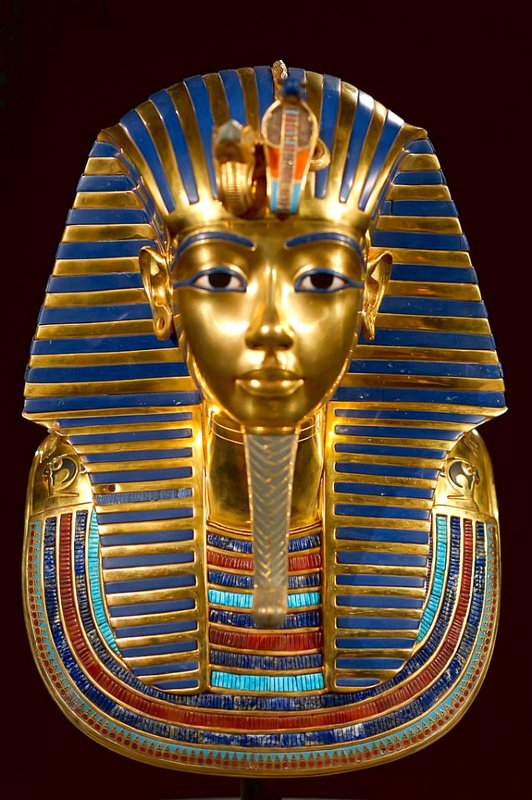
King Tutankhamun Golden Mask is one of the most iconic treasures of ancient Egypt,
Crafted from over 10 kilograms of solid gold, it radiates divine brilliance and royal power,
Intricate inlay work features lapis lazuli, obsidian, quartz, and colored glass, symbolizing eternity,
The nemes headdress is adorned with a cobra and vulture symbols of Upper and Lower Egypt,
The mask’s serene expression reflects the ancient belief in eternal peace after death,
Hieroglyphs inscribed on the back invoke protective spells from the Book of the Dead,
It was designed not just as a funerary ornament but as a spiritual shield for the young pharaoh,
The craftsmanship reveals astonishing metallurgical and artistic skill from the 18th Dynasty.
Discovered in 1922 by Howard Carter, it sparked global fascination with Egyptology,
Today, it stands as a timeless symbol of mystery, majesty, and the legacy of ancient Egypt.
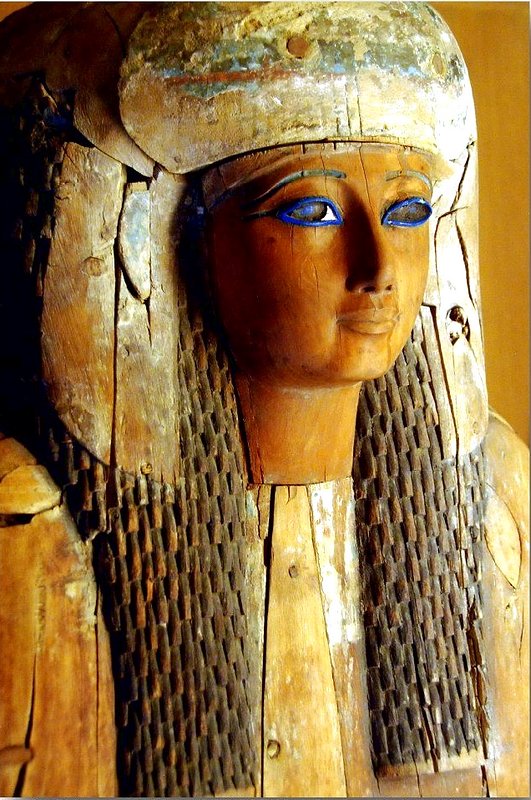
Anthropoid Coffin of Heresenes, detail_ Dynasty 26 (664-525 B.C.). Metropolitan Museum of Art, New York_. Metropolitan Museum of Art, New York
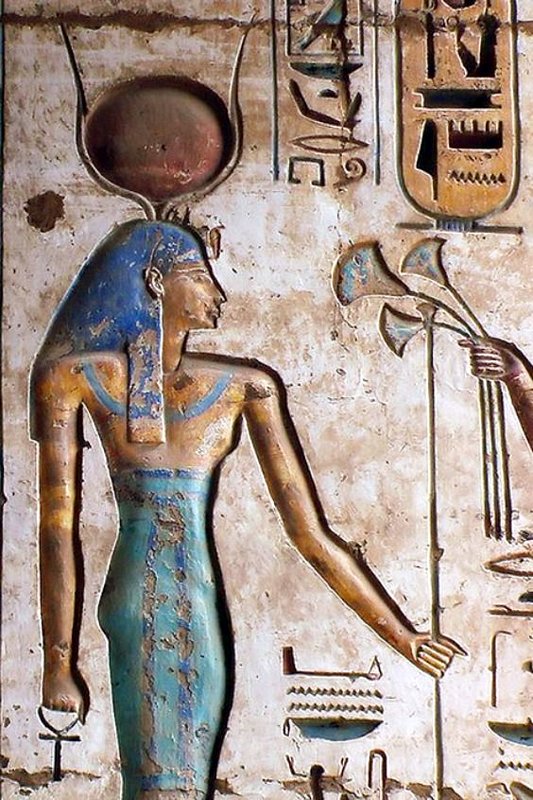
Detail relief inside Medinet Habu , Temple of Ramesses III
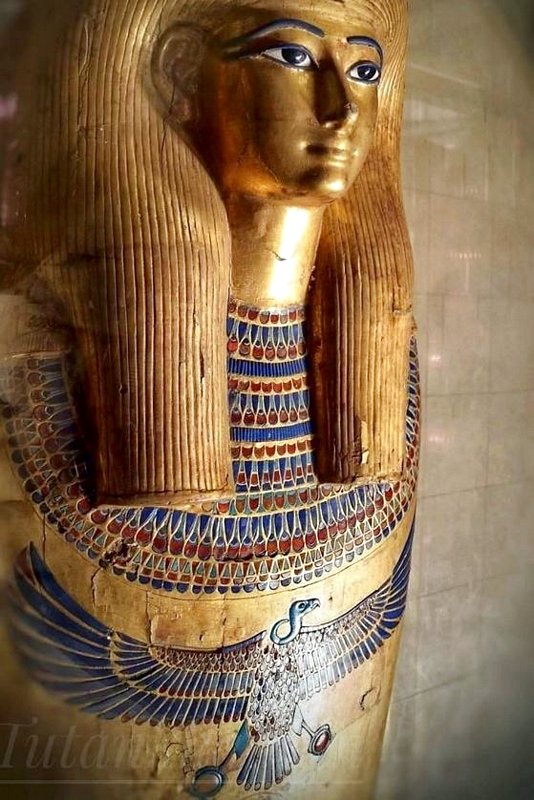
Coffin of Yuya Tutankhamun's Grand Father,
Egyptian Museum Cairo,
The wooden outer sarcophagus of Yuya, mummy-shape, is completely covered with a gold leaf and adorned with glass paste. Inside the sarcophagus, there were two Osiriform coffins with the mummy.
Gallery number: 30 – Upper Floor
Period: New Kingdom
Dynasty: 18th Dynasty – Reign of Amenhotep III (1387-1350 BC)
Place of discovery: Valley of the Kings – Thebes
Size: Height: 59 cm, Length: 204 cm
Material: Wood, stucco, gold leaf, silver leaf, glass paste, alabaster, carnelian
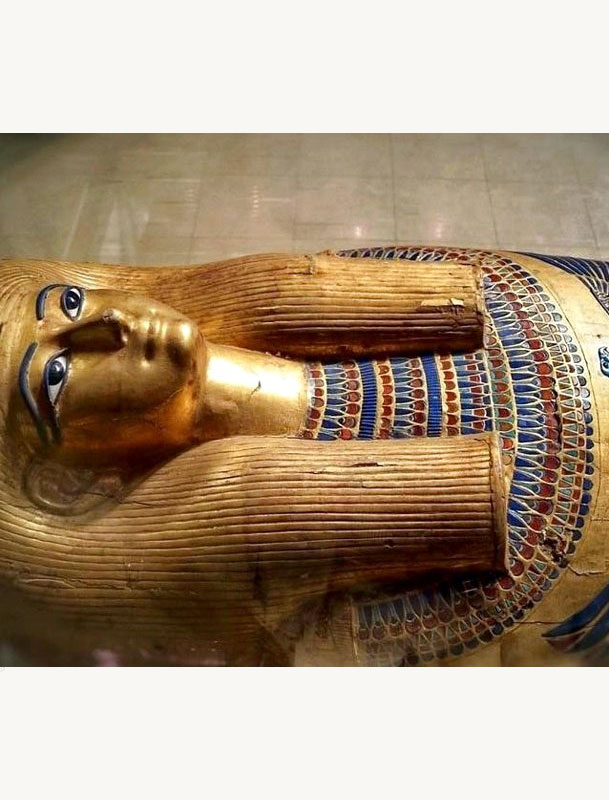
Coffin of Yuya Tutankhamun's Grand Father,
Egyptian Museum Cairo,
The wooden outer sarcophagus of Yuya, mummy-shape, is completely covered with a gold leaf and adorned with glass paste. Inside the sarcophagus, there were two Osiriform coffins with the mummy.
Gallery number: 30 – Upper Floor
Period: New Kingdom
Dynasty: 18th Dynasty – Reign of Amenhotep III (1387-1350 BC)
Place of discovery: Valley of the Kings – Thebes
Size: Height: 59 cm, Length: 204 cm
Material: Wood, stucco, gold leaf, silver leaf, glass paste, alabaster, carnelian
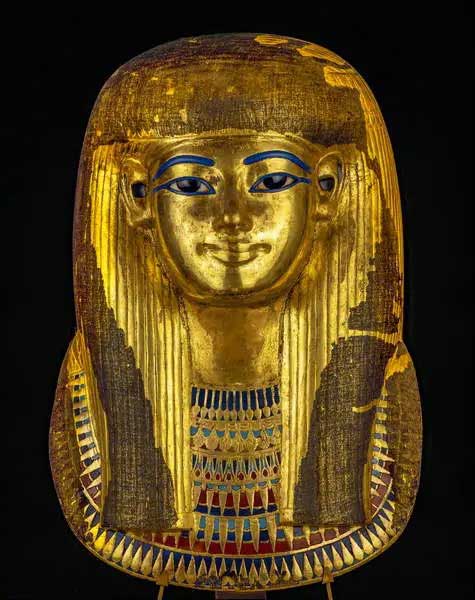
Mummy mask of Thuya, Tut Ankh Amen's Grand Mother in Egypt Cairo Museum
The mummy mask of Tjuyu or Thuya is made of cartonnage covered with a thin layer of gold foil. When found it was completely covered with the remains of its linen shroud removed by the restorer. A few fragments of the shroud, now blackened with age, still adhere to the wig and part of the pectoral. Thuya is depicted with idealized features. Her face is a squarish oval in shape and is framed by a three-part wig that leaves the ears exposed. The headdress is held in place by a diadem that can be seen below the shroud decorated with floral motifs, a lotus flower is placed above the forehead.
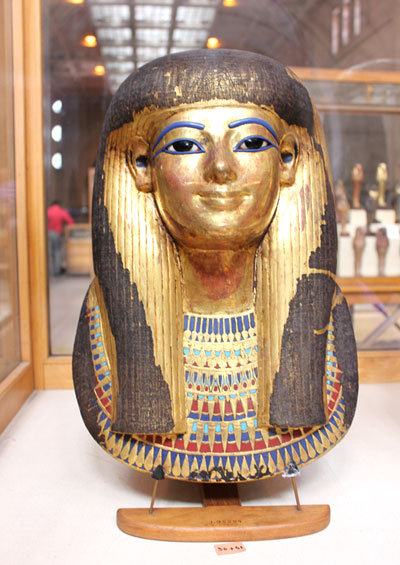
Mummy mask of Thuya, Tut Ankh Amen's Grand Mother in Egypt Cairo Museum
The mummy mask of Tjuyu or Thuya is made of cartonnage covered with a thin layer of gold foil. When found it was completely covered with the remains of its linen shroud removed by the restorer. A few fragments of the shroud, now blackened with age, still adhere to the wig and part of the pectoral. Thuya is depicted with idealized features. Her face is a squarish oval in shape and is framed by a three-part wig that leaves the ears exposed. The headdress is held in place by a diadem that can be seen below the shroud decorated with floral motifs, a lotus flower is placed above the forehead.
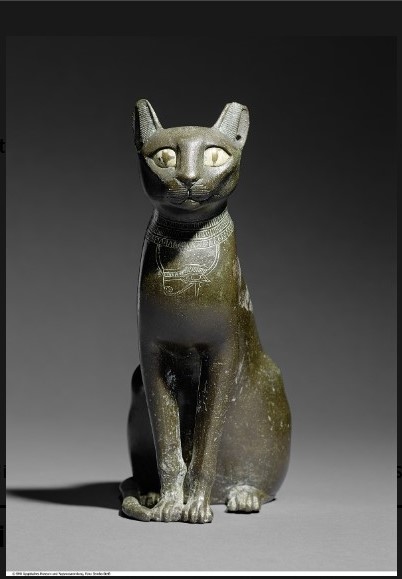
Ancient Egyptian Statue of the goddess Bastet
Late Period, c. 600 BCE
Acquisition Richard von Kaufmann, 1893
Bronze, gold (eyes), white painted, slush molding
Neues Museum, Staatliche Museen zu Berlin
©Ägyptisches Museum und Papyrussammlung, Staatliche Museen zu Berlin, Margarete Büsing
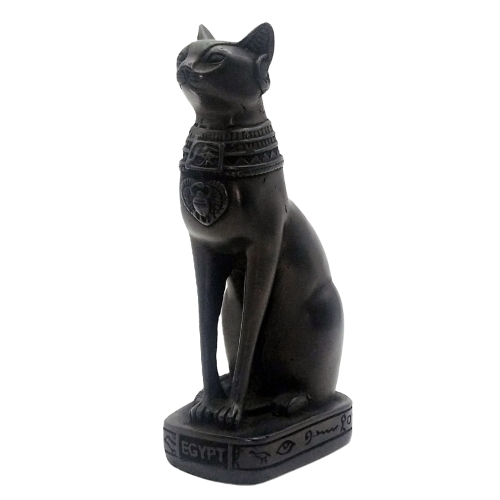
Bastet, originally depicted as a lioness, later took the form of a sleek black cat, embodying both ferocity and grace.
She was the daughter of Ra, the sun god, and served as his fierce protector during his nightly journey through the underworld.
Egyptians cherished Bastet as the goddess of home, fertility, and motherhood, making her presence deeply personal and comforting.
Her temples rang with music, dance, and celebration, festivals of Bastet were known for joy and abundance.
Black cats, believed to carry her spirit, were sacred and often kept as guardians against evil forces.
Bastet was closely linked to perfumes and ointments, symbols of healing, sensuality, and care.
Though gentle and nurturing, Bastet could turn fierce when defending her followers from chaos.
Cat cemeteries near temples show how profoundly she was worshipped; some were even mummified as tributes.
Her image appeared on amulets and household items, a sign of protection and divine femininity.
In her duality soft yet strong Bastet became a timeless emblem of balance in Egyptian spirituality.
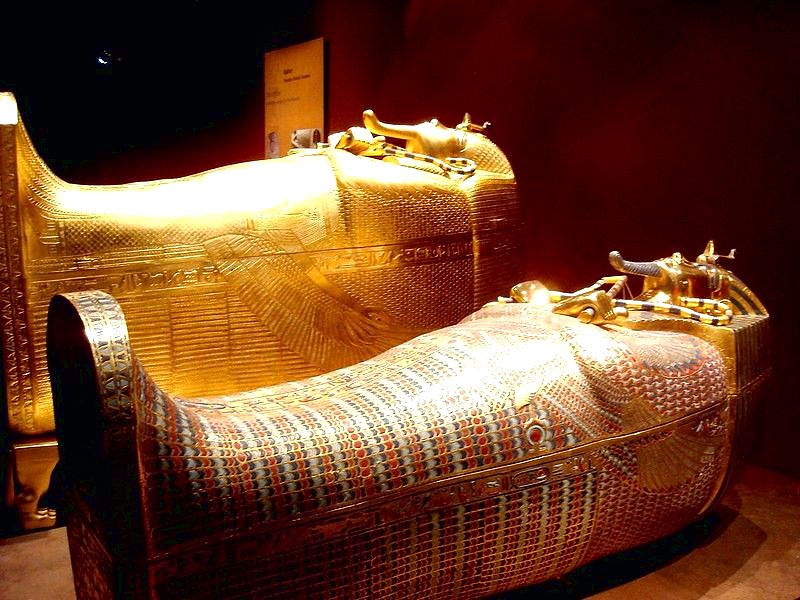
First and second coffin of Tutankhamun
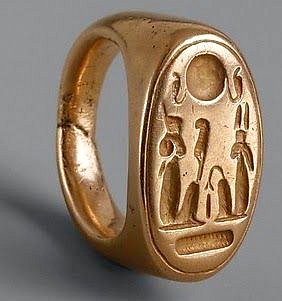
Finger Ring depicting King Akhenaten and Queen Nefertiti as Shu and Tefnut _ New Kingdom, Amarna Period _ The Metropolitan Museum of Art
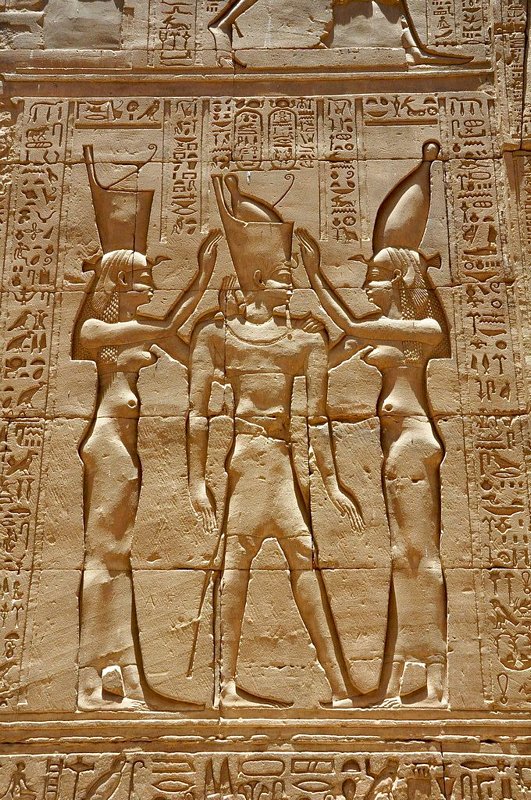
Egypt - Edfu Temple of Horus
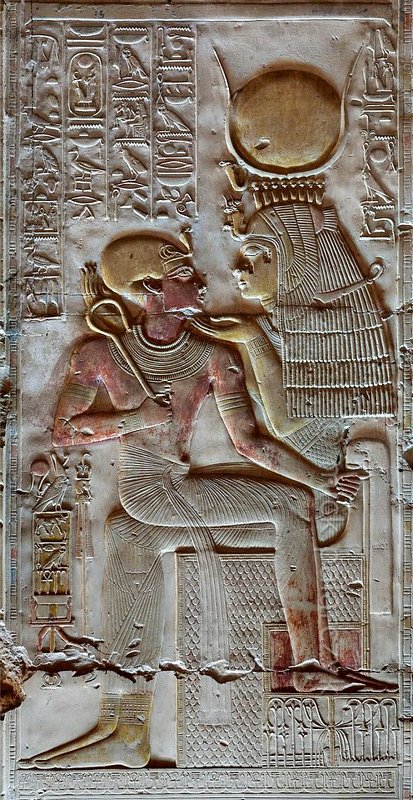
Isis and the young Seti at Abydos
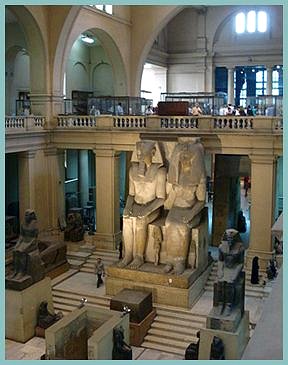
Egyptian Museum in Cairo (EMC) is the oldest archaeological museum in the Middle East, housing over 170,000 artefacts. It has the largest collection of Pharaonic antiquities in the world. The Museum’s exhibits span the Pre-Dynastic Period till the Graeco-Roman Era (c. 5500 BC - AD 364).
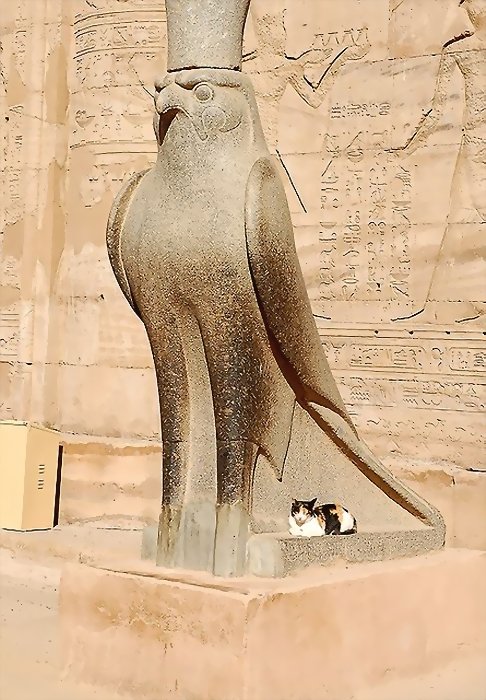
Horus statue at Temple of Edfu
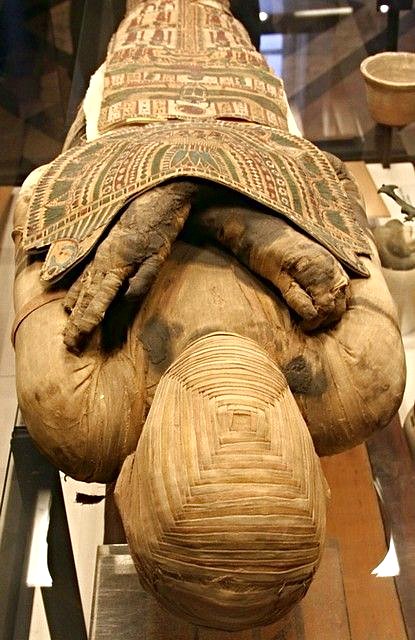
Egyptian mummy from the Louvres museum in Paris. France
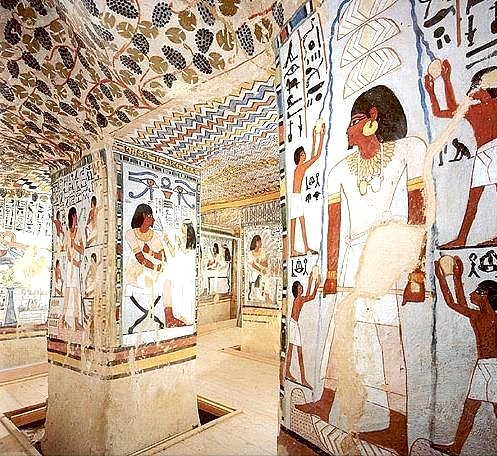
Tomb of Sennefer is one of the most beautifully decorated tombs in the Theban Necropolis on Luxor’s West Bank, Sennefer served as Mayor of Thebes under Pharaoh Amenhotep II during the 18th Dynasty, His tomb is famous for its lush vineyard ceiling, symbolizing prosperity and the afterlife’s abundance, Inside, intricate wall paintings depict Sennefer in religious ceremonies and daily activities, A steep staircase of 44 rock-cut steps leads visitors down to the burial chamber, The tomb’s funerary scenes show priests presenting offerings, including food, clothing, and sacred objects, Some murals illustrate his funeral procession, featuring oxen pulling his sarcophagus, The tomb’s decorations emphasize his high status and devotion to the gods, One notable painting shows him being embraced by deities, receiving their blessings, Sennefer’s tomb remains a must-visit historical site in Luxor, offering a glimpse into ancient Egyptian beliefs.
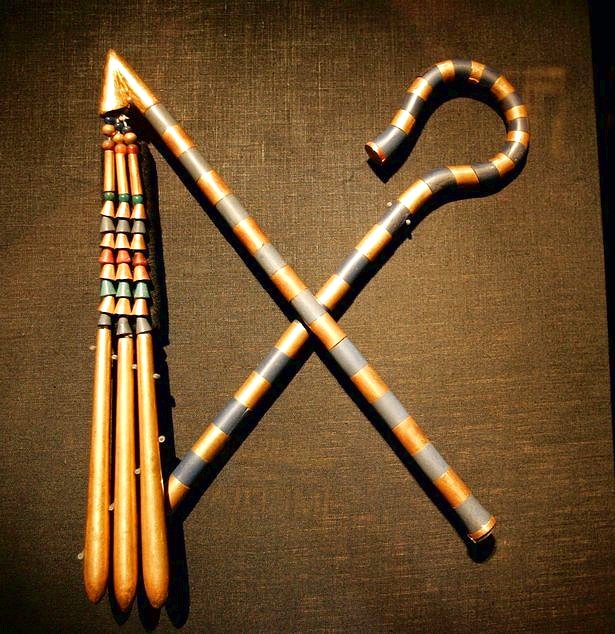
King Tutankhamun's royal crook and flail
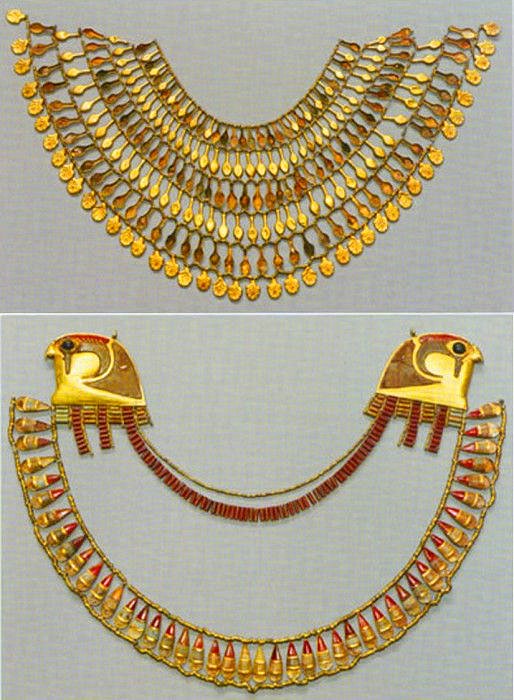
Egyptian Necklaces - Queen Hatshepsut's Dynasty
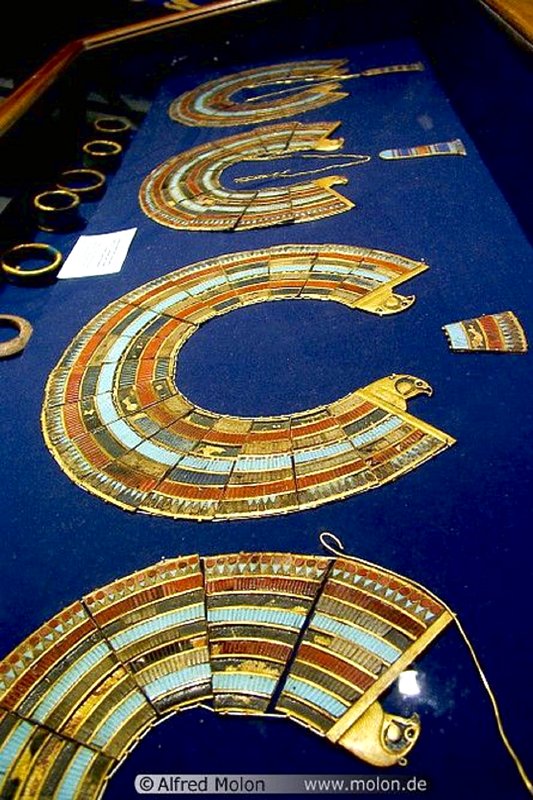
Pharoah Tutankhamun's Falcon-Headed Broad Collar of semi-precious stones with falcon-headed terminals.
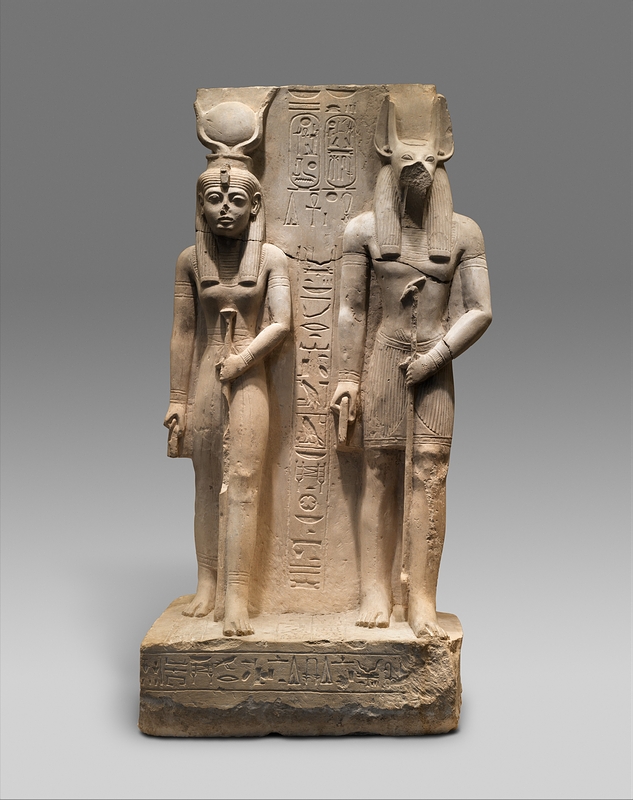
Isis and Wepwawet, god of Asyut, with the name of Siese, Overseer of the Two Granaries of Ramesses II _ New Kingdom, Ramesside, ca. 1279–1213 B.C._ The Metropolitan Museum of Art
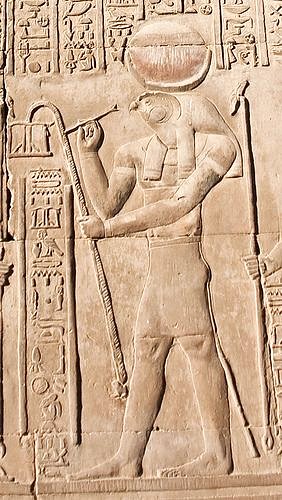
kom_Ombo Temple
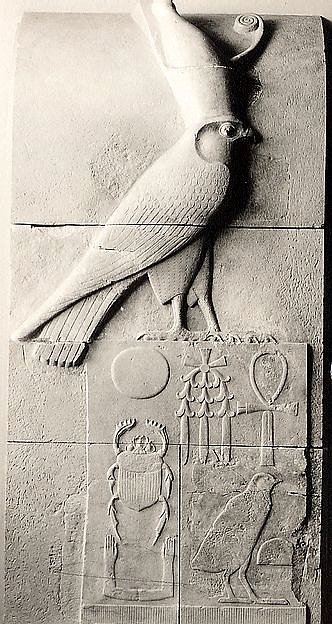
Name panel from inner wall of Senwosret I pyramid complex _ Middle Kingdom _ The Metropolitan Museum of Art
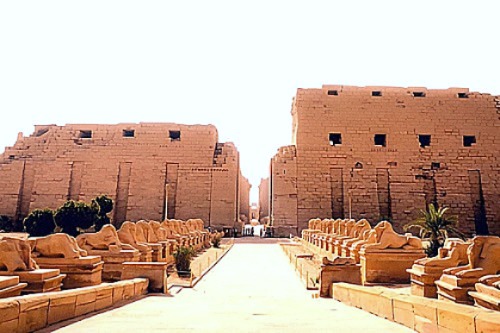
Karnak Temple Complex - Luxor
Karnak is one of the largest temple complexes in the world, covering 247 acres,
It was the main religious center of ancient Thebes and dedicated to the Theban Triad—Amun, Mut, and Khonsu,
The temple was continuously expanded by over 30 pharaohs, making it a unique historical site,
The Great Hypostyle Hall, with its 134 massive columns, is one of its most famous features,
The complex includes multiple precincts, the largest being the Precinct of Amun-Re,
Karnak was not just a temple, it also served as a treasury, administrative center, and palace,
The site was known as "Ipet-isut" meaning "The Most Select of Places" in ancient Egyptian,
The temple’s pylons, obelisks, and statues showcase the grandeur of Egyptian architecture and craftsmanship,
The Sacred Lake within the complex was used for purification rituals by priests,
Today, Karnak remains one of Egypt’s most visited historical sites, second only to the Giza Pyramids.
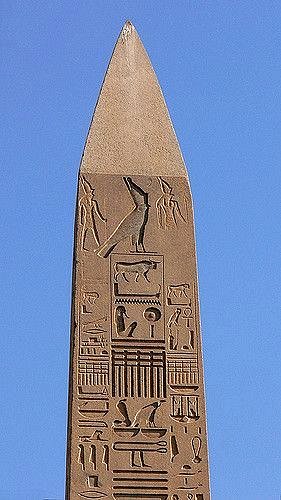
Karnak Temple Obelisks
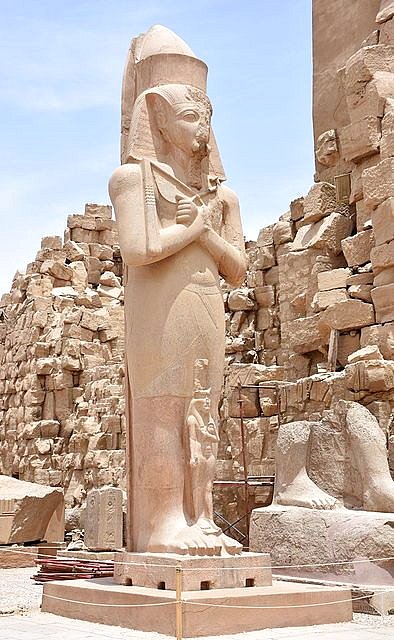
Karnak Temple
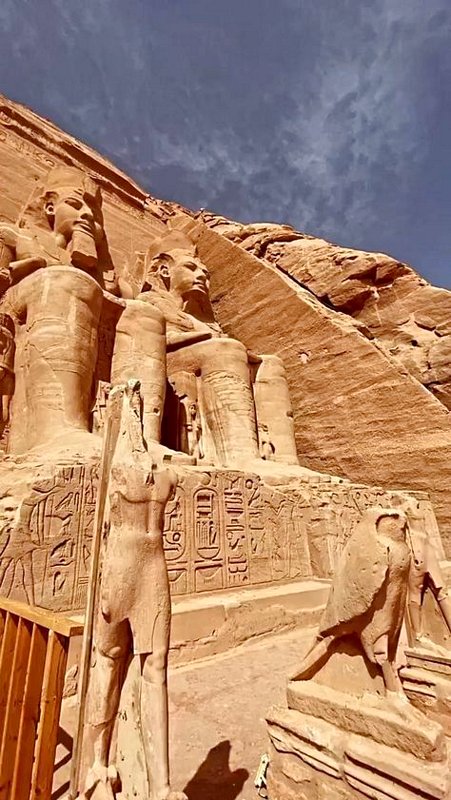
Temples of Abu Simbel
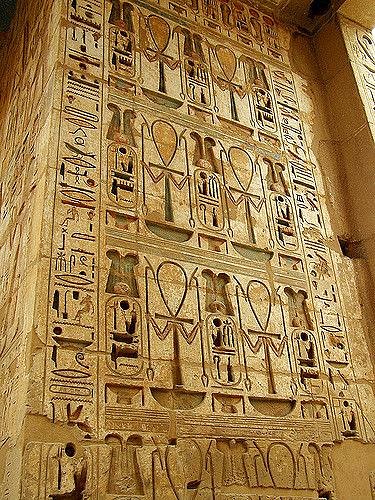
Medinet Habu is an ancient temple complex located on the west bank of the Nile in Luxor; Egypt,
It is best known for the Mortuary Temple of Ramesses III, one of the most well-preserved temples of the New Kingdom,
The temple was built to honor Pharaoh Ramesses III and served as a place for rituals and offerings after his death,
Its entrance features a massive gate resembling a Syrian fortress, showcasing the king’s military victories,
The temple walls are adorned with detailed reliefs depicting battles, including the defeat of the Sea Peoples,
Inside, there is a spacious open court leading to a towering pylon decorated with scenes of Ramesses III smiting his enemies,
The temple also housed a palace connected to the first court, where the king could appear before his subjects,
Medinet Habu was not just a temple, it was part of a larger settlement that remained inhabited until the 9th century,
The site includes structures from different periods, including the Temple of Ay and Horemheb, located nearby,
Today, Medinet Habu stands as a testament to the grandeur of ancient Egyptian architecture and the legacy of Ramesses III.
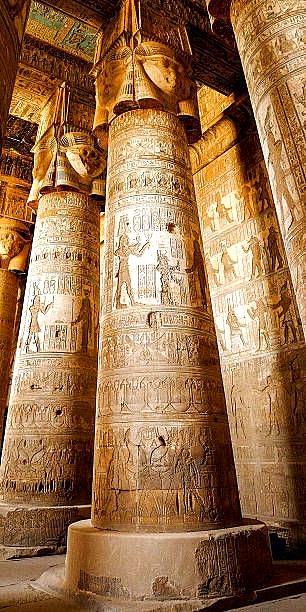
Columns With Hathor Capitals In The Outer Hypostyle Hall Of The Temple Of Hathor, Dendera
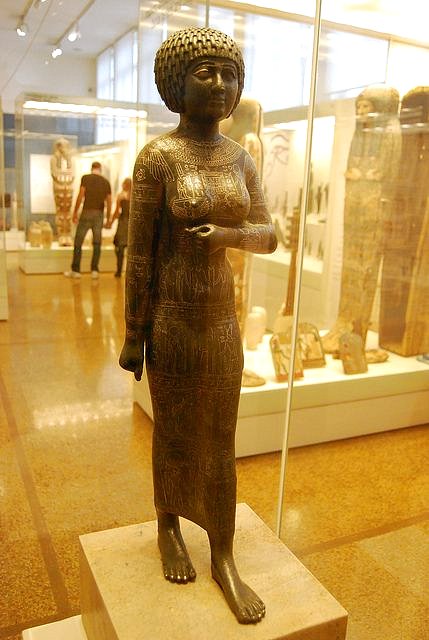
Princess Takushit was a remarkable figure from Egypt’s 25th Dynasty and a noble priestess of Libyan descent during the Kushite rule of Egypt around 670 BCE.
Her only known statue, cast in copper alloy with silver inlay, was discovered in 1880 near Lake Mariut, south of Alexandria.
She was the daughter of Akanosh II, a powerful Libyan chief allied with the Kushite royal house.
Her name, “Ta-Kush-yt,” translates to “The Kushite Woman,” symbolizing her cultural and political ties.
The statue portrays her in a graceful striding pose, barefoot, with a flowing chiton adorned in divine motifs.
She held a fly-whisk scepter and a menit necklace—symbols of her priestly role in temple rituals.
As a “wab-priestess,” she performed sacred purification rites, bridging the earthly and divine realms.
Her statue once shimmered with electrum and ivory inlays, highlighting her spiritual and social stature.
Today, the statue resides in the National Archaeological Museum of Athens, a rare gem of Late Period art.
Takushit’s legacy endures as a symbol of feminine authority, artistry, and religious devotion in ancient Egypt.
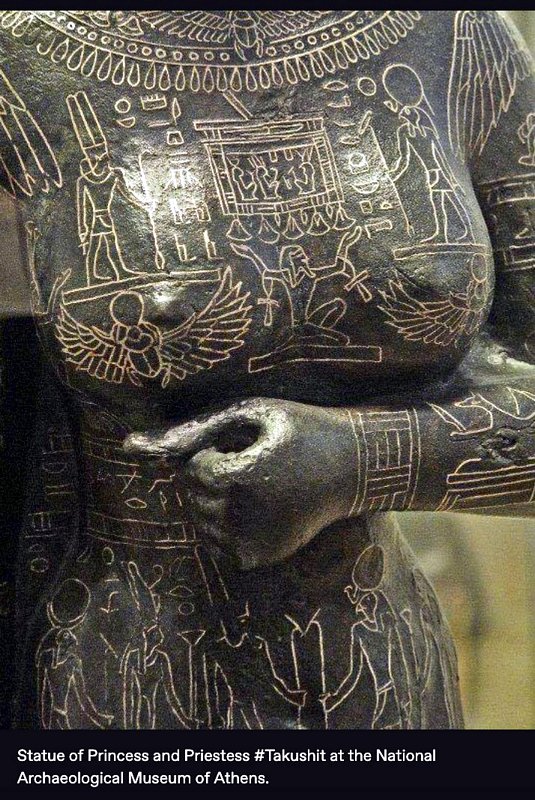
Princess Takushit was a remarkable figure from Egypt’s 25th Dynasty and a noble priestess of Libyan descent during the Kushite rule of Egypt around 670 BCE.
Her only known statue, cast in copper alloy with silver inlay, was discovered in 1880 near Lake Mariut, south of Alexandria.
She was the daughter of Akanosh II, a powerful Libyan chief allied with the Kushite royal house.
Her name, “Ta-Kush-yt,” translates to “The Kushite Woman,” symbolizing her cultural and political ties.
The statue portrays her in a graceful striding pose, barefoot, with a flowing chiton adorned in divine motifs.
She held a fly-whisk scepter and a menit necklace—symbols of her priestly role in temple rituals.
As a “wab-priestess,” she performed sacred purification rites, bridging the earthly and divine realms.
Her statue once shimmered with electrum and ivory inlays, highlighting her spiritual and social stature.
Today, the statue resides in the National Archaeological Museum of Athens, a rare gem of Late Period art.
Takushit’s legacy endures as a symbol of feminine authority, artistry, and religious devotion in ancient Egypt.
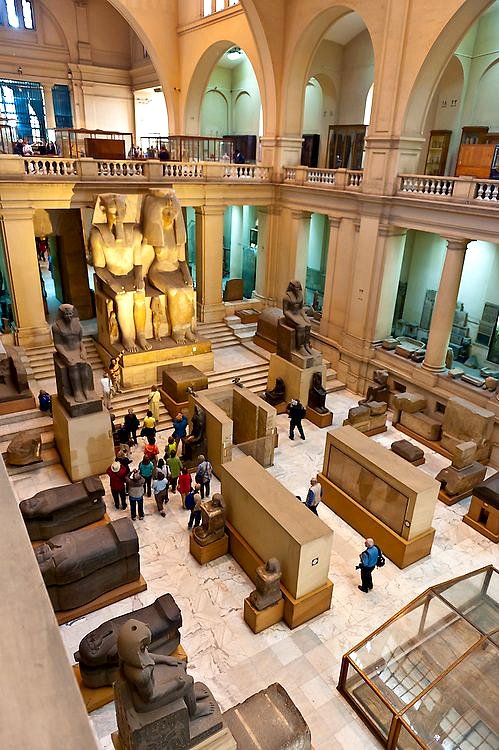
Egyptian Museum in Cairo (EMC) is the oldest archaeological museum in the Middle East, housing over 170,000 artefacts. It has the largest collection of Pharaonic antiquities in the world. The Museum’s exhibits span the Pre-Dynastic Period till the Graeco-Roman Era (c. 5500 BC - AD 364).
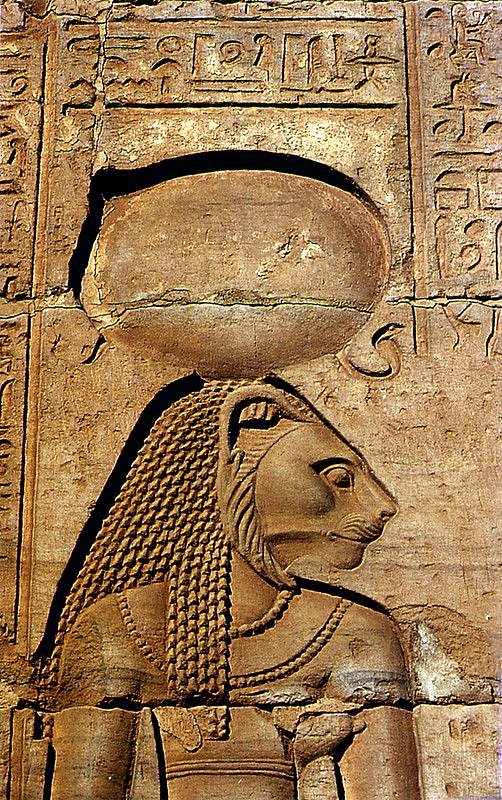
Sekhmet, one of the most powerful deities in ancient Egyptian mythology, was a lion-headed goddess of war and healing.
She was known for her fierce and fiery nature, embodying the destructive power of the sun. Sekhmet was often depicted as a lioness or as a woman with a lioness's head, symbolizing her strength and ferocity.
As the daughter of the sun god Ra, she was sent to punish humanity for their sins,
and her wrath was so great that she nearly destroyed all of mankind. To stop her, Ra tricked Sekhmet by offering her beer dyed to look like blood, which she drank, becoming intoxicated and pacified. Sekhmet's dual nature as both a warrior and healer made her a complex and revered deity, worshipped by those seeking protection and health. Her cult was centered in Memphis, where she was honored with rituals and ceremonies to appease her volatile spirit.
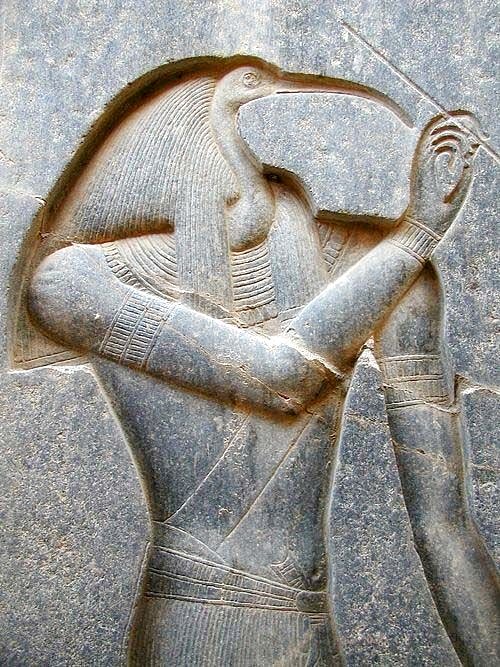
Thoth,
also known as Tehuty, Djehuty, Tahuti, and several other names, was one of the earliest and most significant gods in ancient Egyptian mythology.
He was primarily associated with writing, magic, wisdom, and the moon.
Thoth was often depicted as a man with the head of an ibis or a seated baboon. He was considered the scribe of the gods and was believed to have invented writing, medicine, magic, and many of the Egyptians' civil and religious practices.
Thoth was also the god of equilibrium and was closely associated with the principle of ma'at (divine balance) and the goddess Ma'at.
Thoth played a crucial role in the afterlife, where he was responsible for recording the verdict on the deceased in the hall of Ma'at.
He was also thought to have authored the spells in the "Book of the Dead" and the "Book of Breathings"
Thoth's worship began in Lower Egypt and continued through the Ptolemaic Period, making his veneration one of the longest of any Egyptian deity.
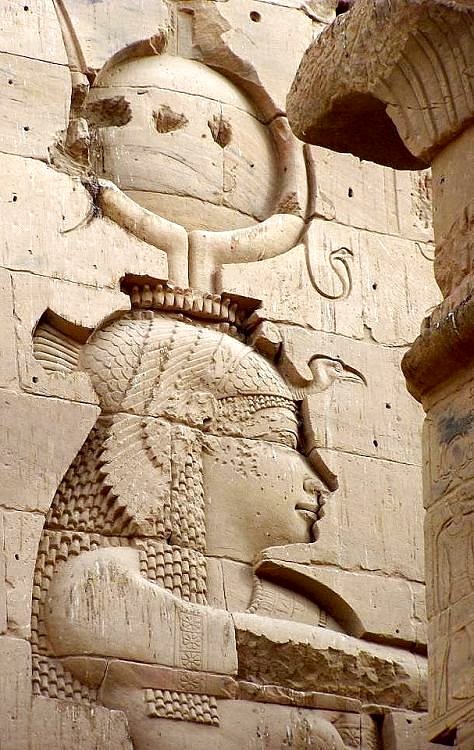
The goddess Isis, detail from the east tower of the first pylon of her temple at Philae
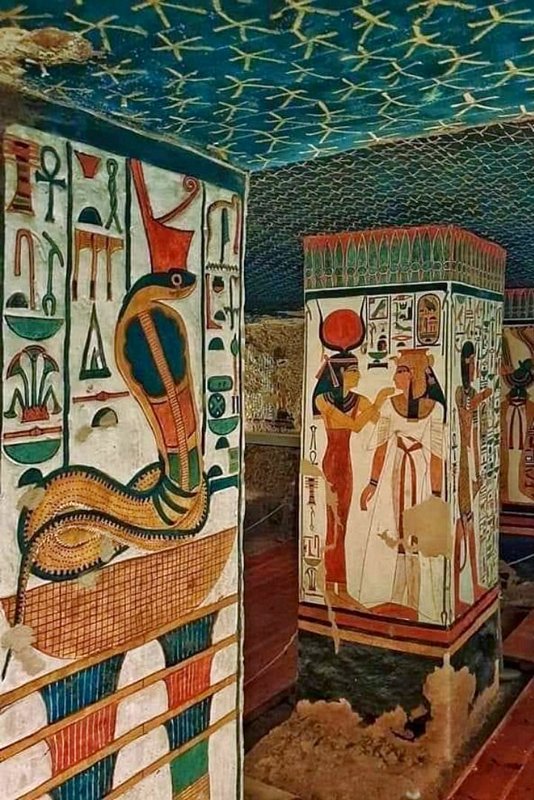
Inside the Tomb of Queen Nefertari
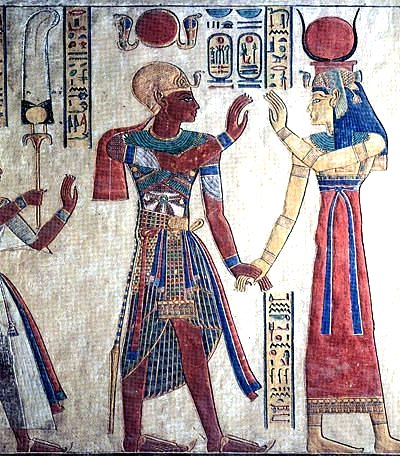
Ramesses III confronting Isis, Valley of the Queens,20th dynasty
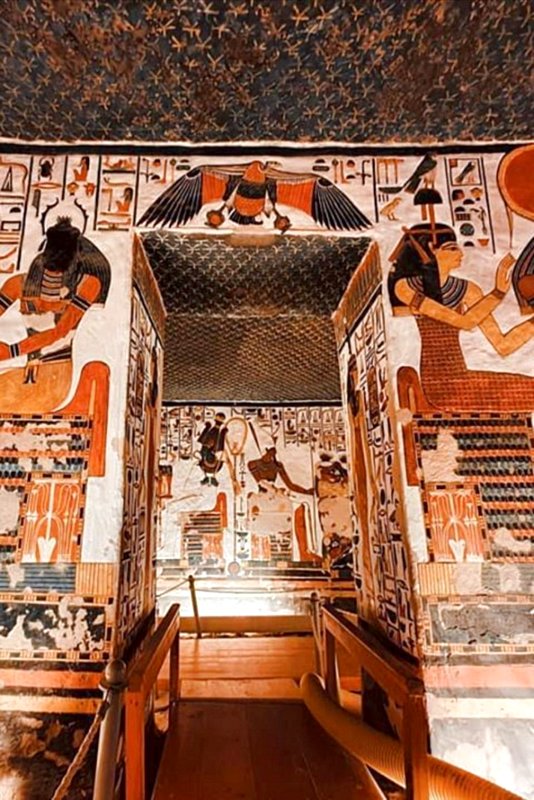
Tomb of Queen Nefertari the wife of Ramses II in the Valley of the Kings - Luxor - Egypt
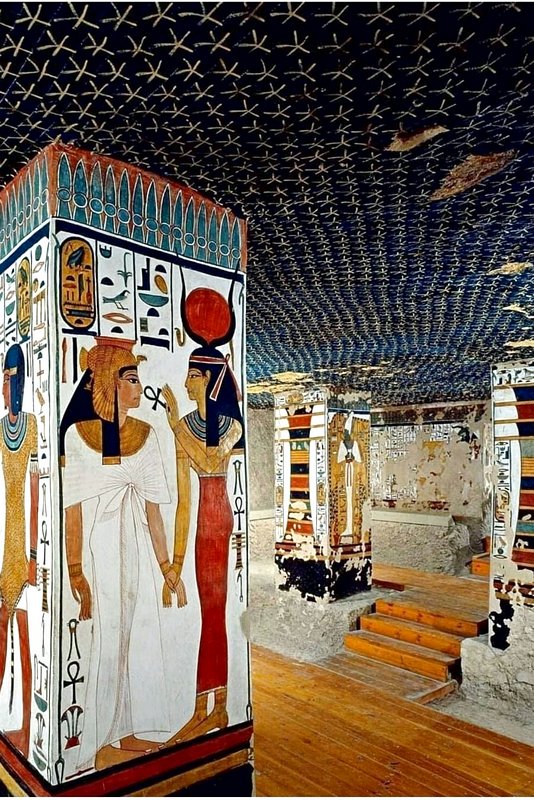
Tomb of Queen Nefertari, Valley of the Queens, QV66, Luxor, Egypt_
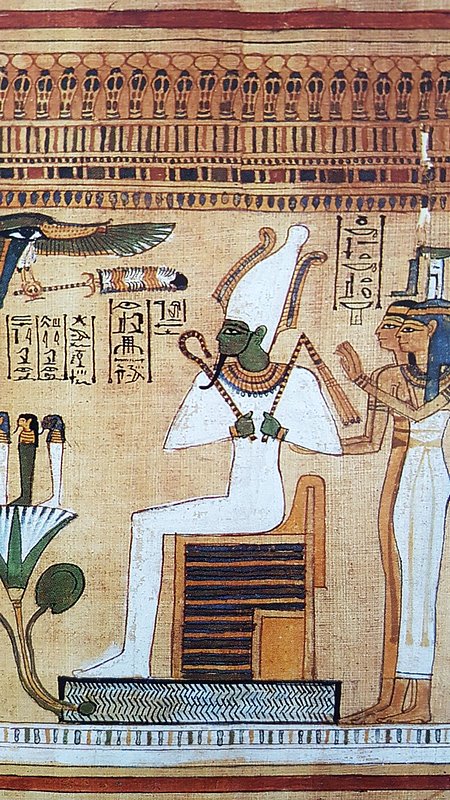
Osiris, the God of the Underworld, Book of the Dead of Hunefar, 19th Dynasty c 1310 BC
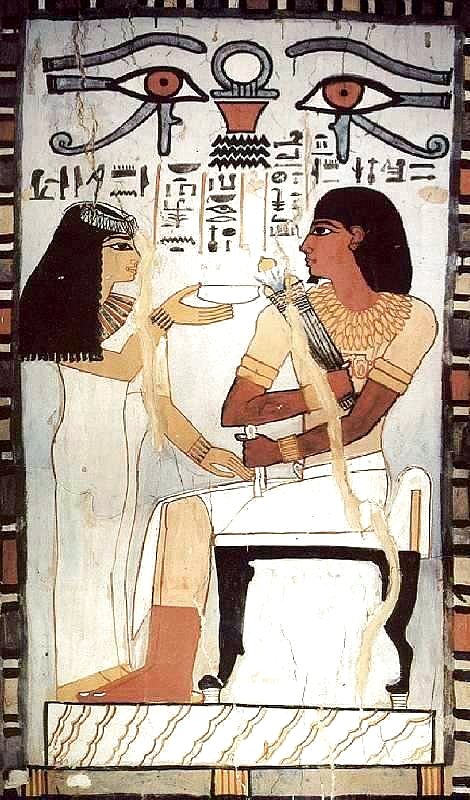
The Tomb Complex of Sennefer, Mayor of the _Southern City_, Thebes _ Ancient Egypt_Kemet
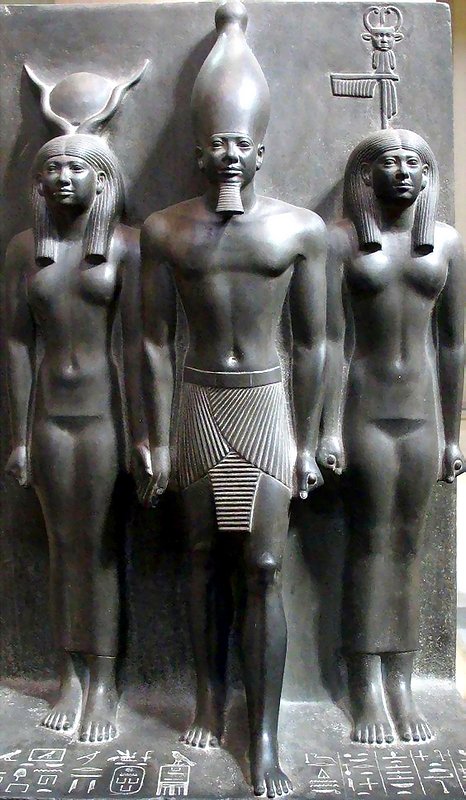
Triad of Menkaure The king accompanied by Hathor and a Nome Goddess with the crouching jackal emblem of the nome of Cynopolis. Menkaure is wearing the white crown of Upper Egypt,
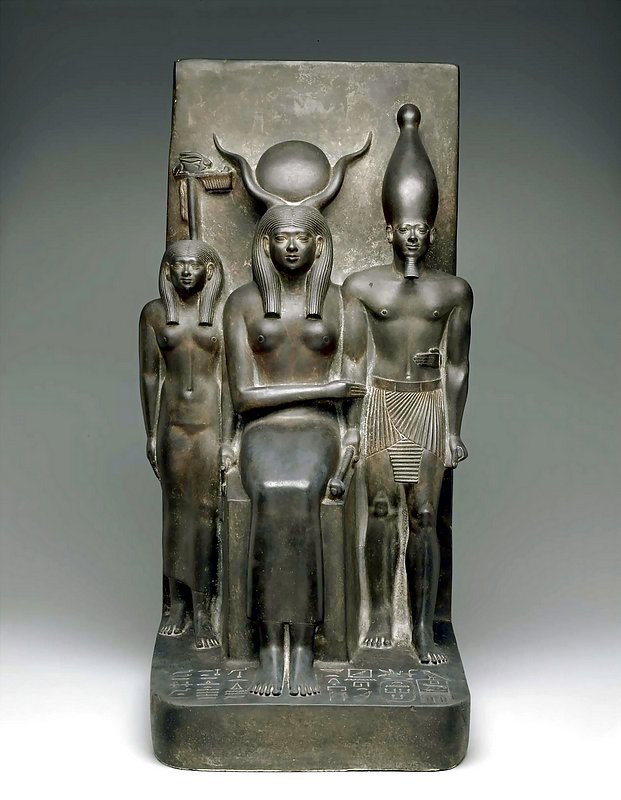
Triad of Menkaure
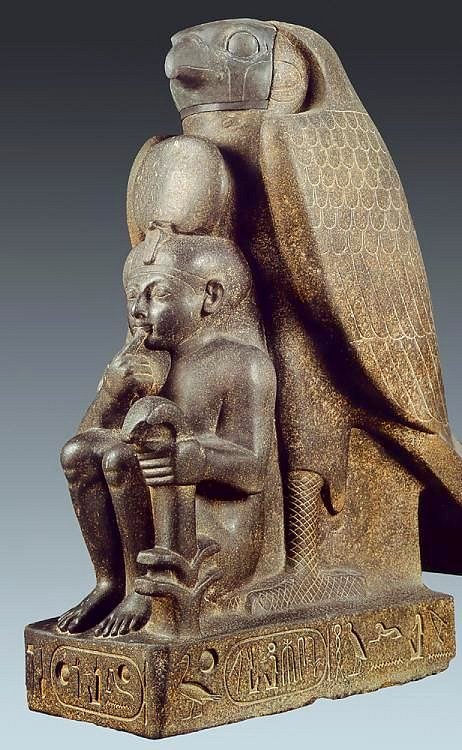
Ramses II as the solar child, protected by Horus
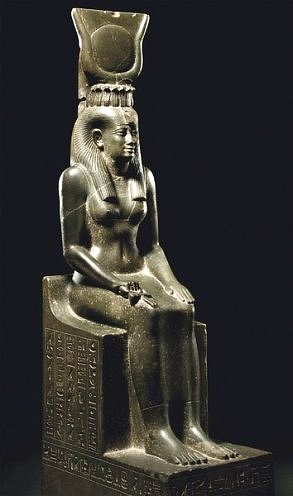
Isis, one of the most revered goddesses in ancient Egyptian mythology, was known as the goddess of magic, motherhood, and fertility. She was the wife of Osiris and the mother of Horus, playing a crucial role in the myth of Osiris's death and resurrection. Isis was often depicted as a woman with a throne-shaped crown or with cow horns and a solar disk. Her devotion to Osiris was legendary; she used her magical abilities to resurrect him after he was murdered by his brother Set. This act of love and magic made her a symbol of eternal life and protection. Isis was also a protector of the dead and a healer, often invoked in spells and rituals for health and safety. Her worship spread beyond Egypt, influencing other cultures and religions, including the Greco-Roman world. Temples dedicated to Isis were built throughout the ancient world, and her cult remained popular for centuries.
Isis's legacy endures as a powerful symbol of love, magic,
and resilience.
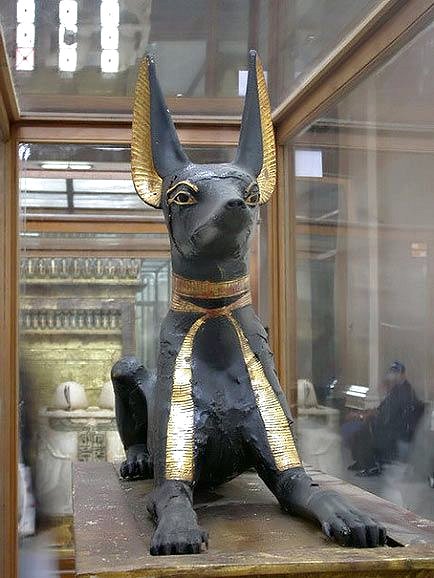
Anubis
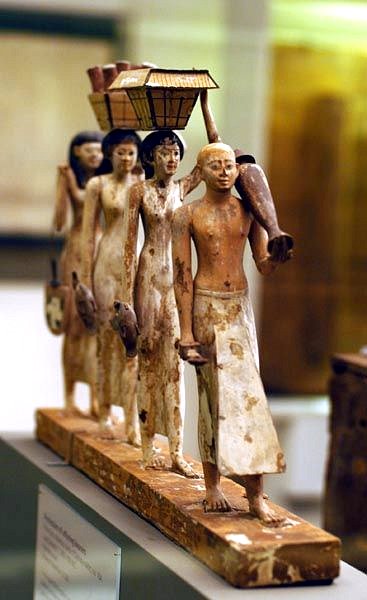
Painted wood offering bearers from the tomb (10A) of Djehuty-Nakht at Deir el-Bersha dating to the late 11th Dynasty
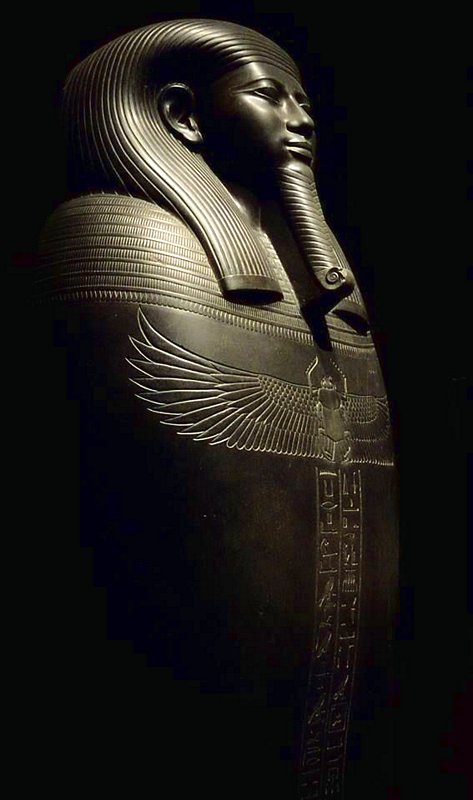
This is the sarcophagus of the vizier Gemenefherbak, XXVI Sais dynasty (664-525 a.C), sculpted in basalt. On the chest a great winged scarab is engraved, a symbol of rebirth
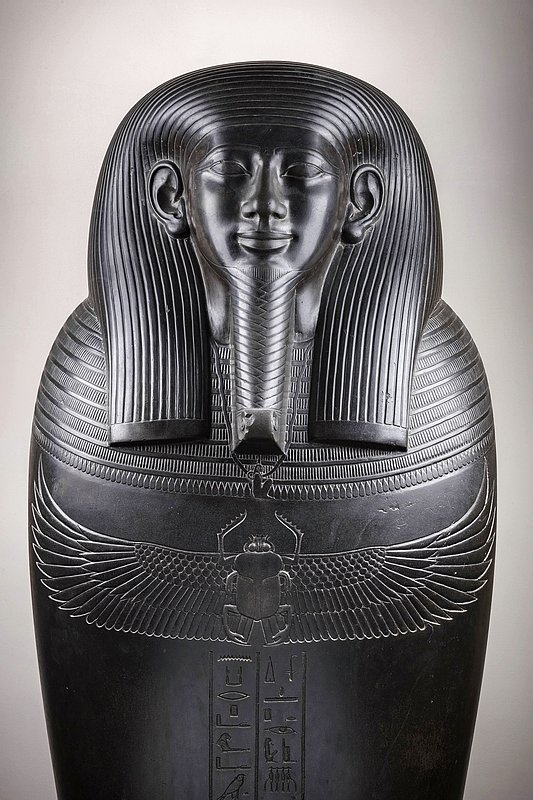
This is the sarcophagus of the vizier Gemenefherbak, XXVI Sais dynasty (664-525 a.C), sculpted in basalt. On the chest a great winged scarab is engraved, a symbol of rebirth
